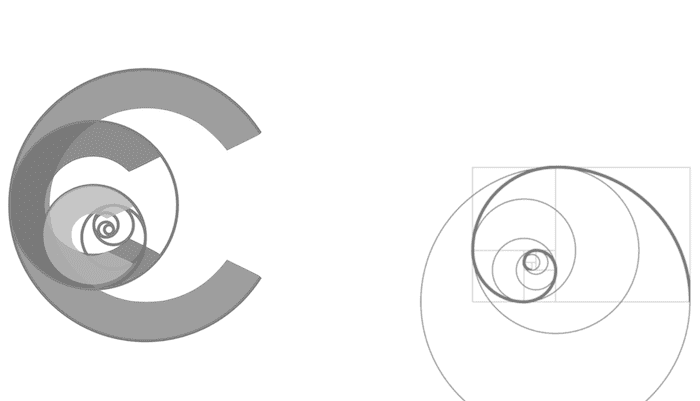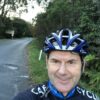Malignant Hyperthermia
OVERVIEW
- Malignant Hyperthermia = pharmacogenetic disease of skeletal muscle induced by exposure to certain anaesthetic agents. Occasionally exercise, heat or illness induced.
- incidence 1:5,000 -> 1:65,000 anaesthetics (suspected)
- mutation in the gene coding for the ryanodine receptor
- RYR1 pathogenic variant confers autosomal dominant malignant hyperthermia susceptibility (see detailed genetics at end of article).
- Most at-risk individuals have no known family history of MH
PATHOPHYSIOLOGY
- excess Ca2+ release during muscle contraction -> increased musle metabolism + heat production.
- prolonged and intensified interation between actin and myosin.
- enhanced aerobic metabolism -> lactic acidosis -> accumulation of intra-mitochondrial calicum -> deconjugation of oxidative phosphorylation -> cytolysis.
TRIGGERS
- Suxamethonium
-> potent trigger of MHS e.g. with first exposure- these all either enhance Ca2+ influx or slowing its efflux
- potent trigger (first exposure)
- All volatile agents (except N2O)
- -> may have tolerated the same agents previously
- Rare in barbiturate-N2O-opiate-tranquiliser-non-depolarising muscle relaxants
- Exercise, heat or illness (uncommon trigger)
CLINICAL
- in lower North Island of NZ
- history of Central Core Disease
(1) increased ETCO2
(2) tachycardia
(3) tachypnoea
(4) masseter spasm (if develops this convert to a MH safe anaesthetic)
(5) muscle rigidity
(6) temp increase (late) – 1 C\15min
- intra-op & 4\24 post op
- tachyarrhythmia
- difficulty ventilation
- hypertension
- sweating
- DIC
- hyperkalaemia
- cardiac arrest
INVESTIGATIONS
- PaCO2 >60mmHg
- PvCO2 >90mmHg and increasing
- BE -5 and falling
- metabolic acidosis
- CK >50,000 IU/L
- K+ increases
- Na+ increases
- myoglobinuria
ACUTE MANAGEMENT
- call for help
- discontinue all anesthetic agents
- maintain anaesthesia with hypnotics and opioids.
- muscle relaxation with NDNMBD
- terminate surgery
- hyperventilate
- 100% O2
- cool (N/S stomach lavage)
- maintain urine output
- inotropes as needed
- HCO3 2-4mEq/kg
- Dantrolene 2.5mg/kg every 5min (total dose 10mg/kg/day – continuous infusion or treat recurrence (25%))
- cardiac arrhythmias -> beta blockers & lignocaine.
- high K+ -> glucose-insulin & frusemide
- watch for DICCK Q6hrly
PROGNOSIS
- mortality without dantrolene = 70%
- mortality with dantrolene = 5%
DEFINITIVE DIAGNOSIS
- All suspected cases warrant referral to an MH centre
- National Specialist Referral Centre – Australia and NZ (MDT clinics) e.g. https://malignanthyperthermia.org.au
- Warn patient and family of impending consequences
- Letter to patient
- Medical Alerts on EMR
- Letter to at-risk family members (usually by genetics clinics)
In the MH clinic
- Genetic testing – small gene panel e.g. RYR1, CACNA1S, STAC3 (See table below for further details)
- Muscle biopsy for in vitro contracture test (IVCT) = definitive diagnosis
- Distinguishing pathogenic variants from variants of uncertain significance (VUS) in MHS can be very challenging
- If a genetic diagnosis confirmed i.e. likely pathogenic or pathogenic variant (LP/PV_
- Can offer predictive genetic testing to at risk relatives
- Genetic counselling and informed consent are essential
- If no genetic diagnosis (or VUS)
- Muscle biopsy/IVCT is required for diagnosis
- 40% of MHS patients have no identifiable genetic diagnosis
- Genotype alone does not equal a diagnosis: IVCT/CHCT and clinical context are essential considerations.
- Diagnostic genetic testing is best ordered by a MH specialist or geneticist.
- At-risk family members who choose not undergo predictive genetic testing or IVCT must be assumed to carry the MHS
PROPHYLACTIC MANAGEMENT
- take history
- decrease anxiety with midazolam
- machine -> remove vapourisers, flush with O2 @ 10 L\min for 20min
- new circuit and airway devices
- ETCO2 monitoring
- nasal temp probe
- dantrolene available
OBSTETRIC PATIENTS
- baby = 50% chance of having MH
- planned delivery with early anaesthetic advice
- anticipate airway problems -> AFOI
- RA safe and preferred
- MH safe drugs
- sux doesn’t cross the placenta
Genetics
- Malignant hyperthermia susceptibility (MHS) is primarily a disorder of sarcoplasmic reticulum Ca²⁺ release in skeletal muscle. The genes associated with MHS lead to decoupling of depolarisation of the transverse tubule and opening of the ryanodine receptor.
- CACNA1S (DHPR) in the T‑tubule normally controls RYR1-dependent channel opening in the adjacent SR; STAC3 couples DHPR to RYR1
- All three converge to regulate SR Ca²⁺ release. This explains why volatile/sux triggers MHS and why dantrolene is efficacious – as an RYR1 antagonist.
| Gene | Chromosomal locus | Encoded protein / role | Inheritance | Example variant(s) (HGVS) | Practical notes |
|---|---|---|---|---|---|
| RYR1 | 19q13.2 | Ryanodine receptor 1; SR Ca²⁺ release channel central to excitation–contraction coupling | Autosomal dominant | c.1840C>T, p.Arg614Cys (classic MH variant; historically “Arg615Cys”) | Major gene. Many families lack a single hotspot; coverage of exon 91 can be poor on some NGS panels. |
| CACNA1S | 1q32.1 | Dihydropyridine receptor α1S (skeletal L‑type Ca²⁺ channel) that mechanically gates RYR1 | Autosomal dominant | Multiple rare variants reported | Some variants overlap with hypokalaemic periodic paralysis/myopathy. |
| STAC3 | 12q13.3 | Adaptor linking DHPR to RYR1 for depolarisation‑mediated Ca²⁺ release | Autosomal recessive (classically in STAC3‑related myopathy) | Pathogenic variants described | Primarily a congenital myopathy gene; MH‑like crises reported under anaesthesia. |
| Linked / unknown loci | 17q11.2–q24; 3q13.1; 5p; 7q21–q22 | — | — | — | Several linkage regions described; no additional proven MH genes yet. |
References and Links
CCC Toxicology Series
General
Approach to acute poisoning, ECGs in Tox, Evidenced-based Tox, Toxicology literature summaries, Does anti-venom work?
Toxins / Overdose
Amphetamines, Barbituates, Benzylpiperazine, Beta Blockers, Calcium Channel Blocker, Carbamazepine, Carbon Monoxide, Ciguatera, Citrate, Clenbuterol, Cocaine, Corrosive ingestion, Cyanide, Digoxin, Ethanol, Ethylene Glycol, Iron, Isoniazid, Lithium, Local anaesthetic, Methanol, Monoamine oxidase inhibitor (MAOI), Mushrooms (non-hallucinogenic), Opioids, Organophosphate, Paracetamol, Paraquat, Plants, Polonium, Salicylate, Scombroid, Sodium channel blockers, Sodium valproate, Theophylline, Toxic alcohols, Tricyclic antidepressants (TCA)
Envenomation
Marine, Snakebite, Spider, Tick paralysis
Syndromes
Alcohol withdrawal, Anticholinergic syndrome, Cholinergic syndrome, Drug withdrawals in ICU, Hyperthermia associated toxidromes, Malignant hyperthermia (MH), Neuroleptic malignant syndrome (NMS), Opioid withdrawal, Propofol Infusion Syndrome (PrIS) Sedative toxidrome, Serotonin syndrome, Sympatholytic toxidrome, Sympathomimetic toxidrome
Decontamination
Activated Charcoal, Gastric lavage, GI Decontamination
Enhanced Elimination
Enhanced elimination, Hyperbaric therapy for CO
Antidotes
Antidote summary, Digibind, Glucagon, Flumazenil, HIET – High dose euglycaemic therapy, Intralipid, Methylene Blue, N-Acetylcysteine (NAC), Naloxone
Miscellaneous
Cocaine chest pain, Digoxin and stone heart theory, Hyperbaric oxygen, Hypoxaemia in tox, Liver failure in tox, Liver transplant for paracetamol, Methaemoglobinaemia, Urine drug screen
- Cadogan M. Michael Denborough (1929-2014). Eponymictionary

Critical Care
Compendium
Clinical Geneticist
BSc(Med) MBBS MMed FRACP | Genetics Online |
Chris is an Intensivist and ECMO specialist at The Alfred ICU, where he is Deputy Director (Education). He is a Clinical Adjunct Associate Professor at Monash University, the Lead for the Clinician Educator Incubator programme, and a CICM First Part Examiner.
He is an internationally recognised Clinician Educator with a passion for helping clinicians learn and for improving the clinical performance of individuals and collectives. He was one of the founders of the FOAM movement (Free Open-Access Medical education) has been recognised for his contributions to education with awards from ANZICS, ANZAHPE, and ACEM.
His one great achievement is being the father of three amazing children.
On Bluesky, he is @precordialthump.bsky.social and on the site that Elon has screwed up, he is @precordialthump.
| INTENSIVE | RAGE | Resuscitology | SMACC

